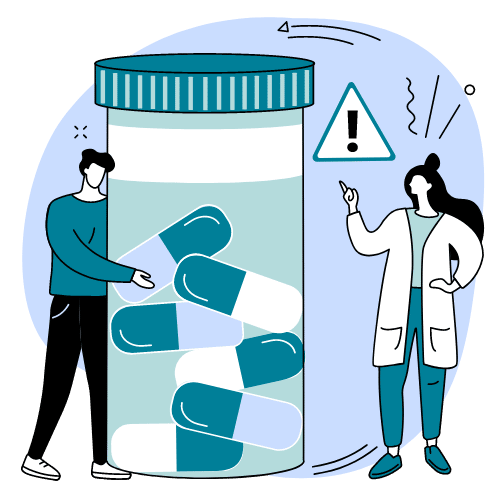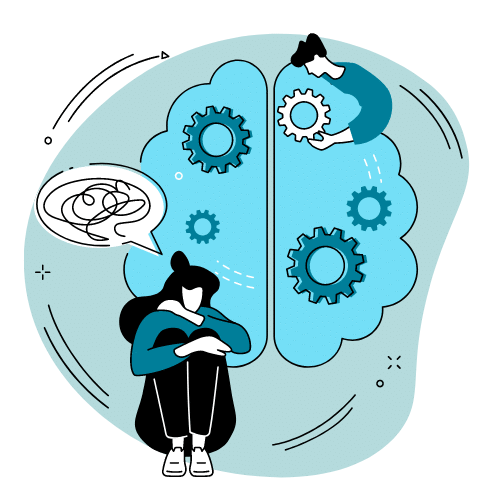The growing legalization and acceptance of marijuana use has led to increased awareness of a paradoxical condition known as Cannabinoid Hyperemesis Syndrome (CHS). This serious condition affects some chronic cannabis users, causing severe episodes of nausea and vomiting – precisely the symptoms many people use marijuana to relieve. Understanding CHS is crucial as cannabis potency and availability continue to rise across the United States.
The Science Behind Cannabis and Nausea
To understand why marijuana can sometimes cause nausea instead of relieving it, we need to examine how cannabis interacts with our body’s endocannabinoid system (ECS). The ECS helps regulate numerous bodily functions, including nausea, appetite, and body temperature. THC, the primary psychoactive compound in marijuana, binds to cannabinoid receptors throughout this system.
Under normal circumstances, THC can help suppress nausea by activating specific receptors in the brain and digestive system. However, with chronic use, these same mechanisms can become dysregulated. The body’s natural endocannabinoid system essentially becomes overwhelmed, leading to a paradoxical response where cannabis begins to cause the very symptoms it once relieved.
Phases of Cannabinoid Hyperemesis Syndrome
CHS typically progresses through three distinct phases:
Prodromal Phase
During this initial phase, patients often experience morning nausea and mild abdominal discomfort. Many continue using cannabis, believing it will help alleviate these symptoms. This phase can last months or even years before progressing to the next stage. Unfortunately, many users mistake these early warning signs as unrelated to their cannabis use, potentially delaying diagnosis and treatment.
Hyperemetic Phase
This acute phase is characterized by intense, persistent vomiting and severe abdominal pain. Patients typically experience:
- Overwhelming nausea that doesn’t respond to traditional anti-nausea medications
- Compulsive hot showering or bathing (a hallmark symptom of CHS)
- Severe dehydration
- Electrolyte imbalances
- Weight loss
The compelling urge to take hot showers or baths is so characteristic of CHS that medical professionals often use it as a diagnostic indicator. Patients report that hot water provides temporary relief, though symptoms return shortly after leaving the shower.

Recovery Phase
This phase begins when cannabis use stops completely. While recovery can take days or weeks, symptoms gradually improve with abstinence. However, resuming cannabis use typically triggers a return of symptoms, often more severe than before.
Health Complications and Risks
Untreated CHS can lead to serious medical complications:
- Severe dehydration requiring hospitalization
- Kidney failure due to persistent vomiting
- Esophageal inflammation or rupture
- Chemical imbalances that can affect heart function
- Malnutrition and significant weight loss
The Growing Prevalence of CHS
As marijuana potency has increased dramatically over the past decades, medical professionals are seeing more cases of CHS. Modern cannabis strains often contain THC concentrations of 20% or higher, compared to 2-3% in the 1970s. This increased potency, combined with more widespread use, has led to a surge in CHS diagnoses across the country.
Recognizing Cannabis Dependency
Many individuals struggling with CHS are also dealing with cannabis use disorder, a recognized substance use disorder that can require professional treatment. Warning signs include:
- Continued use despite negative health consequences
- Failed attempts to cut down or quit
- Spending significant time obtaining, using, or recovering from cannabis
- Withdrawal symptoms when attempting to stop
- Interference with work, school, or relationships
Treatment Approaches at Swift River
At Swift River, we understand the complex relationship between cannabis use, CHS, and addiction. Our comprehensive treatment program addresses both the physical and psychological aspects of cannabis dependency. We offer:
- Medically supervised detoxification to manage withdrawal symptoms
- Evidence-based therapeutic interventions
- Dual diagnosis treatment for co-occurring mental health conditions
- Individual and group counseling
- Holistic healing approaches
- Aftercare planning and support
Our experienced medical team understands that many individuals with CHS have attempted to quit cannabis use on their own without success. We provide the structured support and professional care needed to achieve lasting recovery.
The Path to Recovery
Recovery from CHS and cannabis dependency is possible with proper treatment and support. Our team at Swift River has helped numerous individuals overcome cannabis use disorder and its associated health complications. We create personalized treatment plans that address each client’s unique needs and circumstances.
Get Help Today
If you or someone you love is experiencing symptoms of CHS or struggling with cannabis use, don’t wait for the condition to worsen. Swift River’s experienced healthcare professionals are here to help. Our evidence-based treatment programs can help you recover your health and build a foundation for lasting wellness.
Contact Swift River today at 413-570-9698 for a confidential assessment and to learn more about our specialized treatment programs for cannabis use disorder. Your journey to recovery starts with a single phone call.












